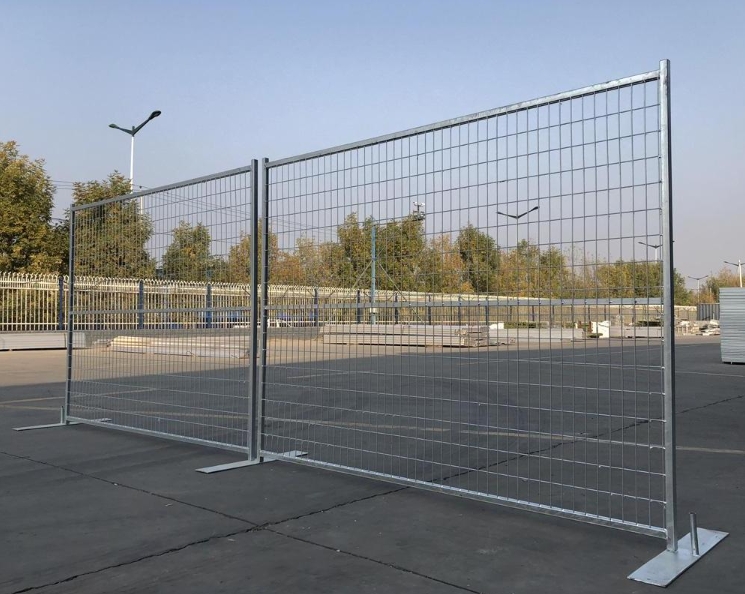
Říj . 12, 2024 16:33 Back to list
CE Certification Requirements for Security Fence Design and Implementation
CE Certification for Security Fence Design Ensuring Safety and Compliance
In an ever-evolving world where security concerns are paramount, the design and manufacturing of security fences have become increasingly sophisticated. The CE certification serves as a critical benchmark, ensuring that security fences meet specific safety, health, and environmental protection standards within the European Economic Area (EEA). This article delves into the significance of CE certification in security fence design and how it enhances safety and compliance in various settings.
Understanding CE Certification
CE marking is a declaration by the manufacturer that their product meets all relevant European directives and regulations. This certification facilitates the free movement of products within the EEA while ensuring they adhere to safety standards. For security fences, CE certification takes into account several directive criteria, including product safety, structural integrity, and environmental impact.
Importance of Security Fences
Security fences serve a crucial role in protecting properties, individuals, and assets from potential threats. Whether used in residential areas, commercial properties, or industrial sites, these fences act as the first line of defense against unauthorized access. As such, the stakes are high when it comes to ensuring that these structures are designed and constructed to withstand various security challenges.
CE Certification Process for Security Fences
The process of obtaining CE certification for security fences can be divided into several key steps
1. Product Assessment The first step involves conducting a thorough assessment of the fence design, materials, and intended use. Manufacturers must evaluate whether their product meets the necessary requirements as outlined in relevant European directives.
2. Testing and Compliance Various tests are performed to ensure the fence meets durability, strength, and safety standards. This may include impact resistance tests, corrosion tests, and evaluations of how the fence withstands different environmental conditions.
3. Technical Documentation Manufacturers must compile technical documentation that outlines the design, manufacturing processes, and testing results. This documentation must demonstrate how the product complies with the applicable regulations.
4. Declaration of Conformity Once the product passes testing and the necessary documentation is prepared, the manufacturer issues a Declaration of Conformity. This document states that the product complies with all relevant EU regulations and can be legally sold within the EEA.
ce certification security fence design

5. CE Marking Finally, the product is affixed with the CE marking, signifying that it meets all required EU standards. This marking instills confidence in consumers and regulatory authorities that the security fence is safe for use.
Benefits of CE Certification
Obtaining CE certification for security fence designs provides numerous benefits
- Enhanced Credibility CE certification enhances a manufacturer's credibility and reputation in the market. It signifies a commitment to quality and safety, which can attract more customers.
- Market Access CE certification opens doors to the European market, allowing manufacturers to sell their products across EU member states without facing additional barriers.
- Consumer Confidence End-users are more likely to trust and choose products that are CE certified, knowing that these items have undergone rigorous testing and comply with EU safety standards.
- Liability Reduction Manufacturers who prioritize CE certification can potentially reduce liability issues since compliance with recognized safety standards can provide legal protection in the event of litigation.
Future Trends in Security Fence Design
As technology advances, so too does the field of security fencing. Emerging trends include the integration of smart technologies, such as surveillance cameras and alarm systems, with traditional fencing solutions. These innovations not only enhance security but also raise new challenges in terms of compliance and certification.
To maintain the relevance of CE certification, it is vital that manufacturers keep abreast of evolving regulations and incorporate technological advancements into their designs. This proactive approach will not only ensure compliance but also promote a culture of safety and innovation in the security fencing industry.
Conclusion
CE certification is essential for security fence design, ensuring that products meet stringent safety and compliance requirements in the European market. As security needs continue to grow and evolve, manufacturers must prioritize CE certification as part of their commitment to quality and safety. In doing so, they will enhance consumer trust, gain market access, and contribute to a safer environment for all.
-
FENC 3D Mesh Fence – Durable, Secure & Easy Installation Custom Quotes & Factory Direct Supply
NewsJun.10,2025
-
Decorative Metal Fencing 3D Supplier – Custom Metal Screen Fencing Manufacturer & Pricelist
NewsJun.10,2025
-
High-Quality Metal Fence Panel - Durable Metal Brown Panel Fence Product & Exporter
NewsJun.10,2025
-
Lawn Chain Link Fencing - Durable & Affordable Solutions Secure Lawn Fences
NewsJun.10,2025
-
Heavy-Duty Metal Fence Posts for Deer Control Factory Direct Supplier
NewsJun.10,2025
-
Galvanized Steel Fence Posts Durable Rust-Resistant Fencing Solutions
NewsJun.09,2025
